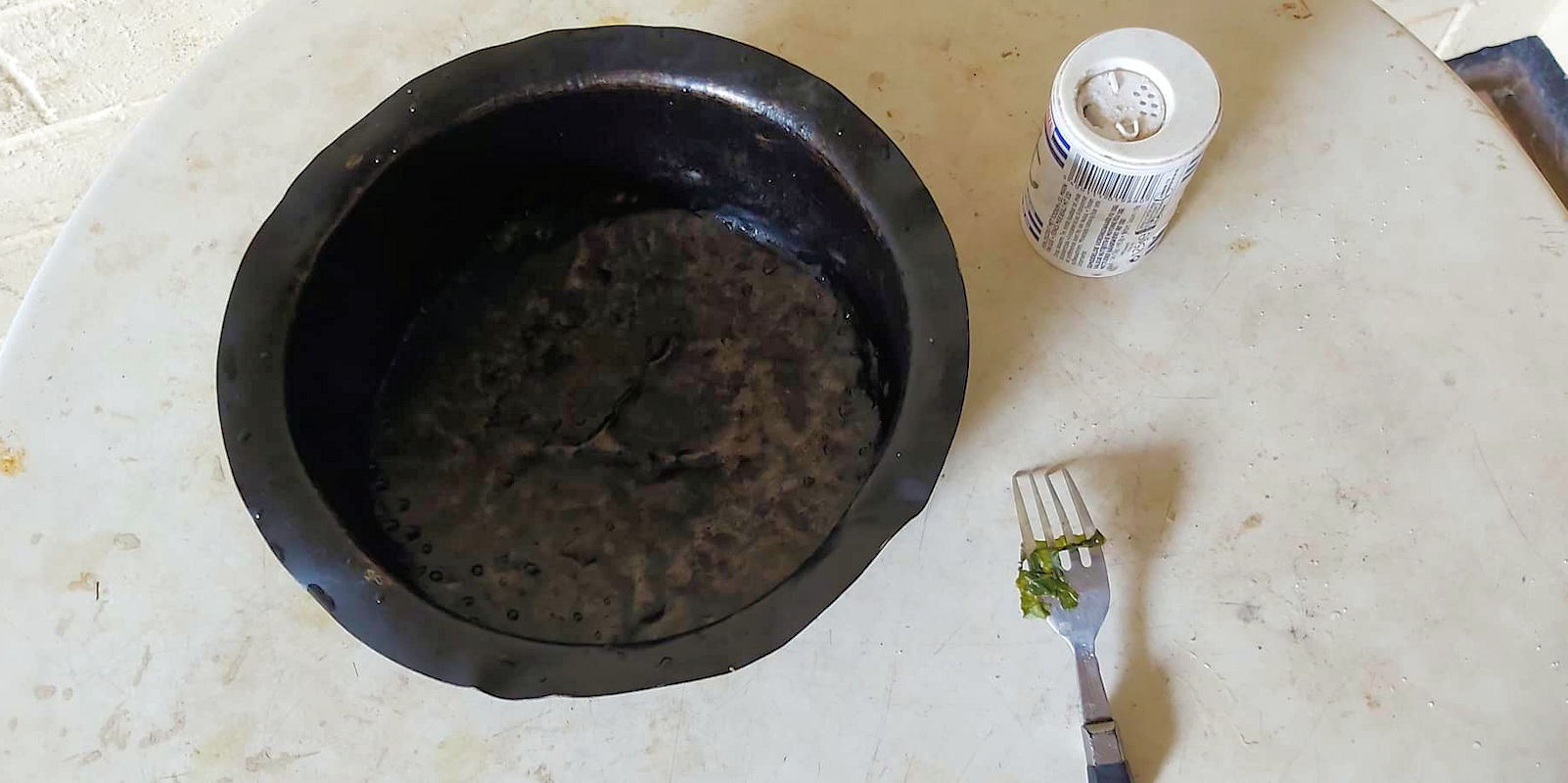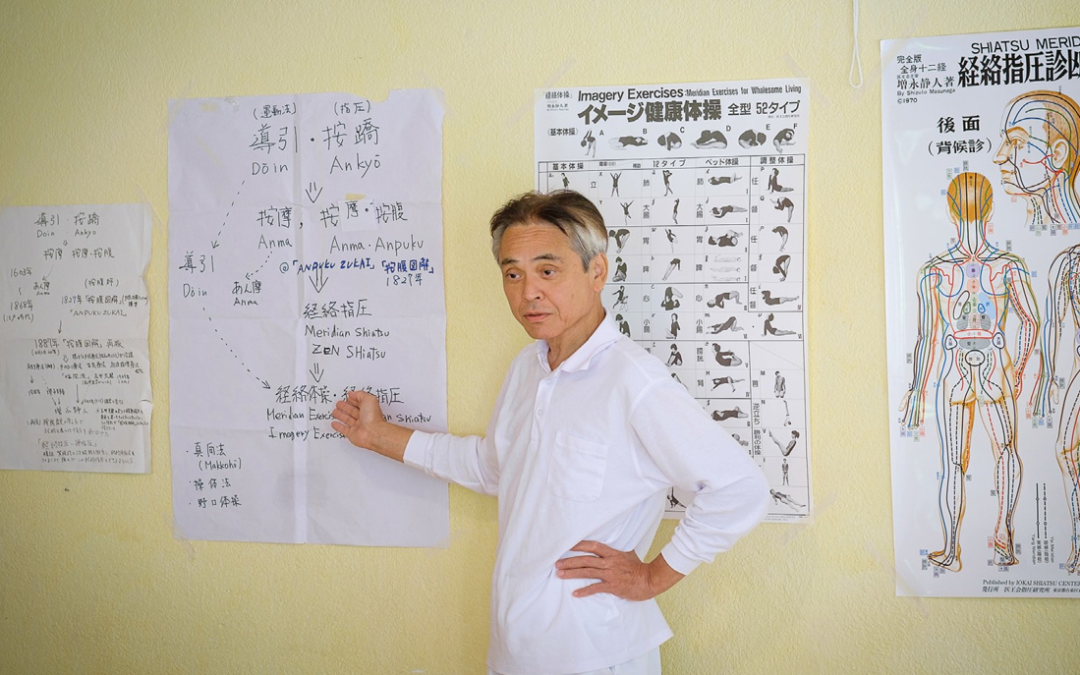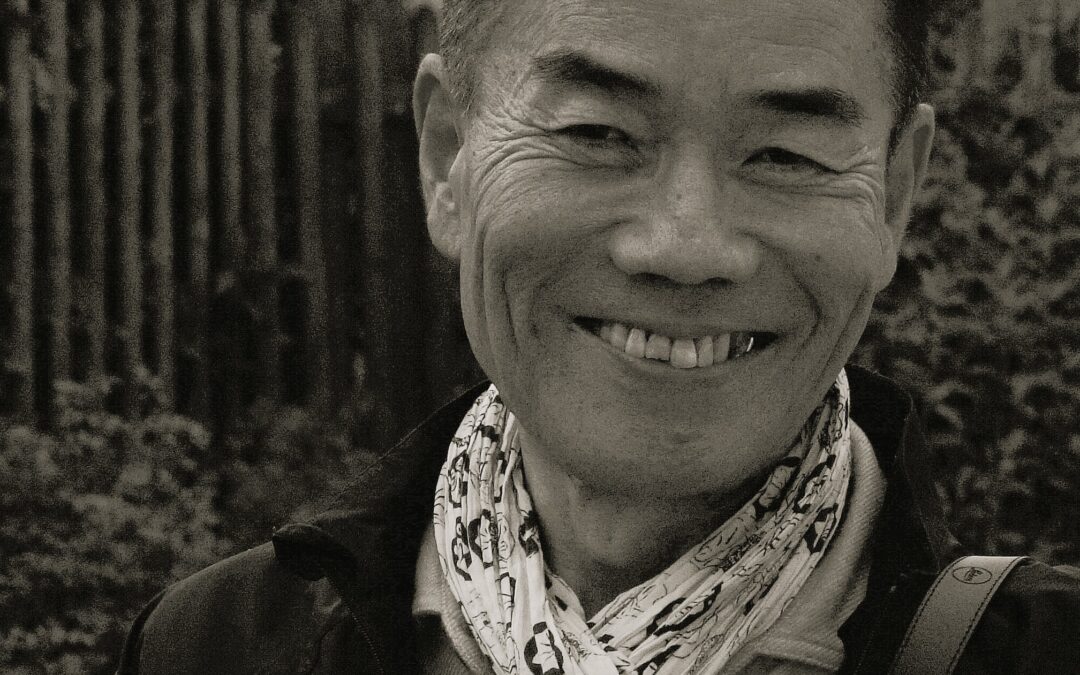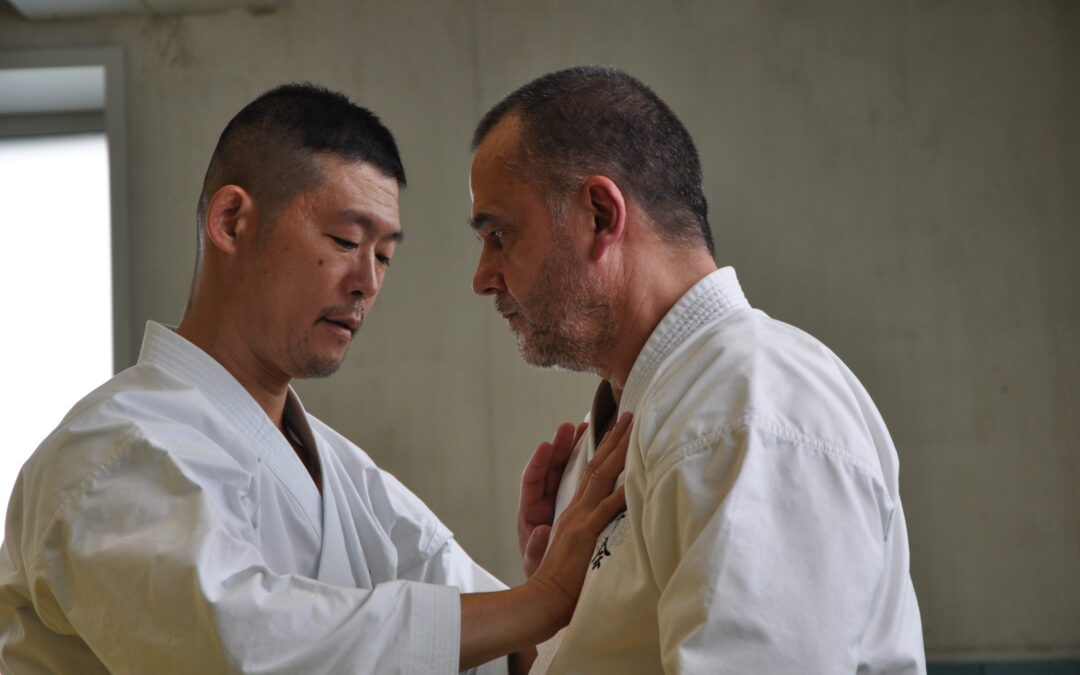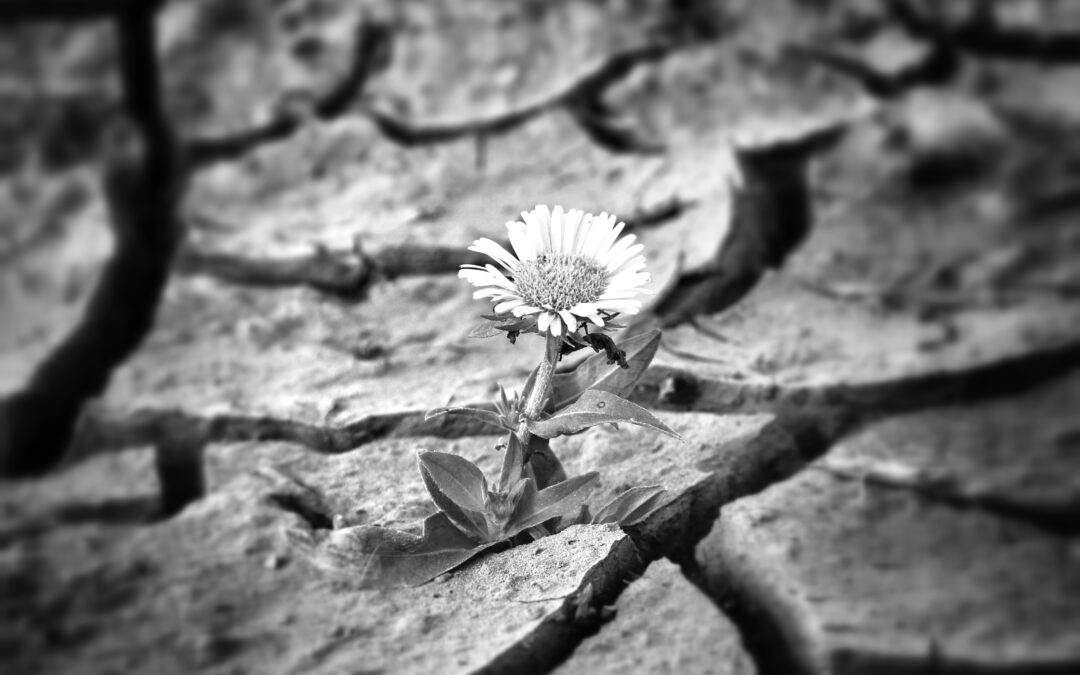Trauma can occur either through sudden and violently destructive events, or through a gradual process of attrition. Both can be devastating but both can be prevented and alleviated. It is never too late and there is no such thing as a hopeless case. No one need ever abandon hope. There is always something that can be done and once the first step is taken, others may follow. A combination of methods is likely to be the optimal way forward and, as a holistic therapy with many avenues of intervention at its disposal, Shiatsu has a primary role in this. The most important part of the help we offer may be empowerment – every word said, deed enacted and thought envisaged is in the service of empowering our clients’ liberation from the strait jacket of trauma. In the process, we can not only reclaim, and regain our original energy but discover gifts and abilities we never suspected we had.
A Blackened Mess
You enter the kitchen and the stink and smoke tell their sorry tale – a pan was left on the stove; the moisture content is burnt off and the pot is a blackened mess. It happens every now and then – thankfully not all that often – and the question arising is: how best to deal with it?
There exists a small minority of people who have the time and the wherewithal to deal with it immediately. Windows and doors are opened, the pot is emptied, water is applied, scrubbing ensues, and the pot is returned – almost – to its pristine state.
Many people take semi-immediate action and the pot is left, half-filled with water, to soak. Some folks deal with the pot later that evening, some the next day and some put it off for several days or a even week. There is no essential difference between these relatively minor time delays in terms of returning the pot to a useful and rehabilitated state.
At the other end of the scale are people who have neither the time nor the ability to do anything restorative at all. The pot is viewed as a casualty. It is set aside. It moves gradually further and further away from the centre of attention and, in time, ends up out by the step or in the yard somewhere. This situation leads to a more or less permanent state of complete dereliction.

Picture this pot, lying abandoned outside, exposed to the elements of wind, cold, heat moisture and dryness. Amid this exposure, a small portion of the damage will be eroded over time. Unfortunately, the same is true of the innate structure of the pot itself. There is no win-win here, just a slow, local decay, leading to gradual pollution of the immediate environment.
There is, of course, another, less dramatic way to blacken pots – constant use with no serious attempt to clean. This is a slower but equally devastating process for the pan, which will inevitably find itself gradually relegated to the back of the cupboard, neglected and unused, until the day it is eventually rediscovered and probably discarded.
Going back to the cleaning operations alluded to above, a pertinent question arises: is the pan ever really returned to its pristine state? The answer is: probably not. There will either be scars or remnants or a combination of both. Either the cleaning is so intense that it actually removes a layer of metal from the pan, or the cleaning will stop at the level where the final remnants of carbon are firmly lodged into the pot’s current state of being. In most cases, we will witness a mixture of the two scenarios.
By this stage, the metaphor we are exploring will probably have become abundantly transparent – the blackened pot is, in fact, a traumatized human being. We have understood that trauma can occur either through a sudden, intense and violently destructive event, or through a gradual process of attrition. Both can be devastating but both can be prevented, or at least alleviated.
Viable Treatment Methods – Shiatsu has a Primary Role
The subject of trauma has now become a far more viable one than it was just a few years ago. It is acceptable to talk about it in many different arena, and viable methods for treatment are emerging, based on everything from therapeutic discussion through NLP, EFT, TRE and hypnosis to bodywork and energy-based treatment modalities. A combination of methods is widely assumed to be the optimal way forward. Shiatsu has a primary role in all of this.
Still, it is a subject that needs illumination from as many angles as possible, and although a metaphor can never mirror the object of comparison with exact precision, imagery does have the advantage of activating senses that rational approaches cannot…
If we imagine that a person, like a pot, may be the subject of an intensely damaging event, which forms might this take?
Attributes of Trauma
War and the atrocities associated with it are an obvious example. Any kind of attack involving physical violence, even an accident, can be traumatizing in a similar way. Natural catastrophes need to be included, of course: earthquakes, fires, floods and tornadoes. Death, especially multiple deaths, can leave people feeling shaky and untrusting of the world around them. This is especially true for the very young and the very isolated. People suddenly finding themselves unemployed or pensioned off may easily experience such events as traumatic. Domestic partnerships that break up, seemingly without warning, especially where a double life is revealed, are also the stuff of trauma for certain individuals.
At this point we need to pause and consider the subjective element. A common phrase that has some relevance is: that which does not kill me, makes me stronger. That is true for some people and in some circumstances and is a subject well worth exploring in depth and at length. However, it most certainly does not apply universally. An event that does not kill us can also leave us maimed and scarred for life – traumatized. Some of the deciding factors include innate sensitivity, existing support structures, available healing resources and prevalent cultural surroundings, which either encourage getting “back on the horse” relatively quickly or succumbing to one or another kind of passive acceptance or even, in worst case scenarios, victimhood.
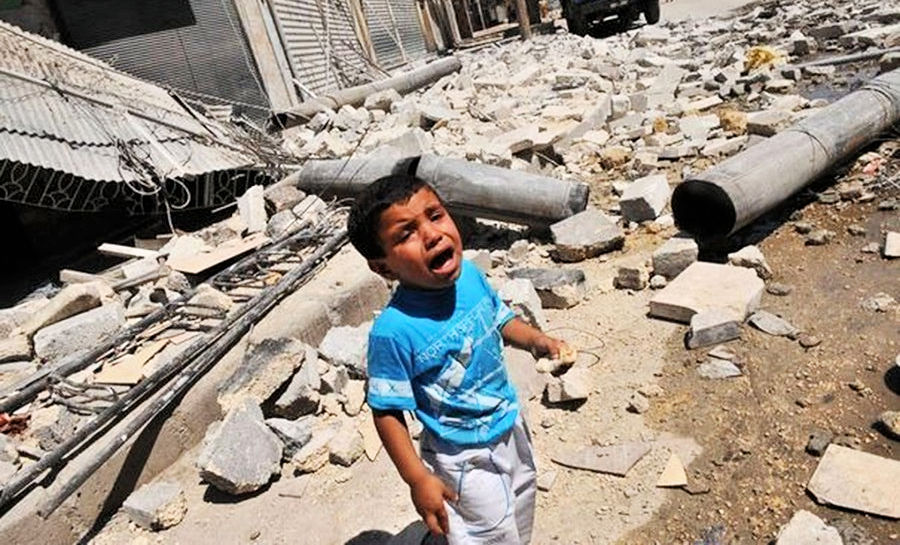
Resuming our list of events that may traumatize quickly and suddenly, we need to include any kind of sexual violence or assault. Once again, we need to return to the subjective – that which one person might internalise to the depths of their being as a crippling attack on their foundations, another may brush off and put down to experience. Some individuals may even gain immense strength from overcoming apparently disabling levels of abuse – such individuals then have the opportunity of becoming role models for other survivors.
The probability of events proving traumatic or otherwise depends also on their repetition or singularity. While an isolated violent and dehumanizing event may be survived with only minor consequences, one that is repeatedly experienced will eventually destabilise even the strongest of constitutions. The word “torture” now enters our space, since repeated assaults are fundamentally construable as torture and the results will almost certainly be traumatic.
Consequences of Trauma
The consequences of trauma can include everything from a slightly reduced to a fundamentally altered personality. A person may need to cede relatively smaller or comparatively larger portions of their innate character to conserve enough life energy to survive the experience(s) in question. In any case, the result will be a proportional reduction in life essence and a corresponding diminishing of the expression of life force and thereby personality. Another person may choose to explore completely different aspects of their personality to develop survival strategies – some even adopt the very methods that were exercised upon them…
In extreme cases, there is also the question of additional personality traits and sub-divisions within the basic character. Here we enter the realms of so-called obsession and multiple personalities. Neither is especially uncommon – mild obsession can be seen on football terraces, at concerts and in certain gangs. Multiple personalities are on view at many workplaces and social forum. These are usually not problematic but if left unchecked and/or boosted by mounting inner tensions, peer pressure or other unfavourable external influences, can eventually become serious problems.

This reminds us of the pot which, through careless use and neglect, can become just as dysfunctional as the pot that was suddenly scalded. The result is similar, even though the process is quite different. Gradual attrition is certainly no less destructive than sudden assault. The exact opposite can be true – an acute experience can be dealt with swiftly and effectively, whereas a gradual, creeping influence can go relatively unnoticed and therefore seep insidiously deeper and gradually deeper into the layers of the bodymind.
Effects of Trauma: Mental, Emotional & Spiritual Levels
It goes without saying that assault and torture – both sudden and gradual – can be experienced on all levels: physical, mental, emotional and, of course, spiritual. We have already dwelt at some length on various physical examples – all of which tend to include or entail a degree of spill over into other levels.
Mental and emotional assault can be exerted in workplaces, families, relationships and via social groups and social media – of which there are an ever-increasing number. Peer pressure and the need to conform are the avenues for many of these traumatic events. Political and religious propaganda provide obvious examples of mental and emotional assault, while unspoken codes of conduct in familial and spousal relationships might constitute the more subtle end of the spectrum. Neither is necessarily more offensive or benign. Once again, some yield and buckle under, whilst others are relatively unaffected or even find themselves developing as a result.
In all circumstances, we need to bear in mind that trauma is never a foregone conclusion, given the innate durability and resilience of humankind. Equally, we need to be aware that trauma is all around us, often concealed behind superficial personas, made over to resemble “normality”.
Spiritual assault can also take every conceivable form, from discreet to overt. Since punishment can be doled out in an infinite variety of manners and reward is likewise multi-spectrumed, the range is infinite. In some cultures, public exhibitions of cruelty are used to reinforce drastic codes of behavioural conduct, whilst in others far more subtle codes of bodily and verbal language are used for coercive purposes in spiritual milieu. The key factor will invariably circulate around the erosion or negation of spontaneous free will.
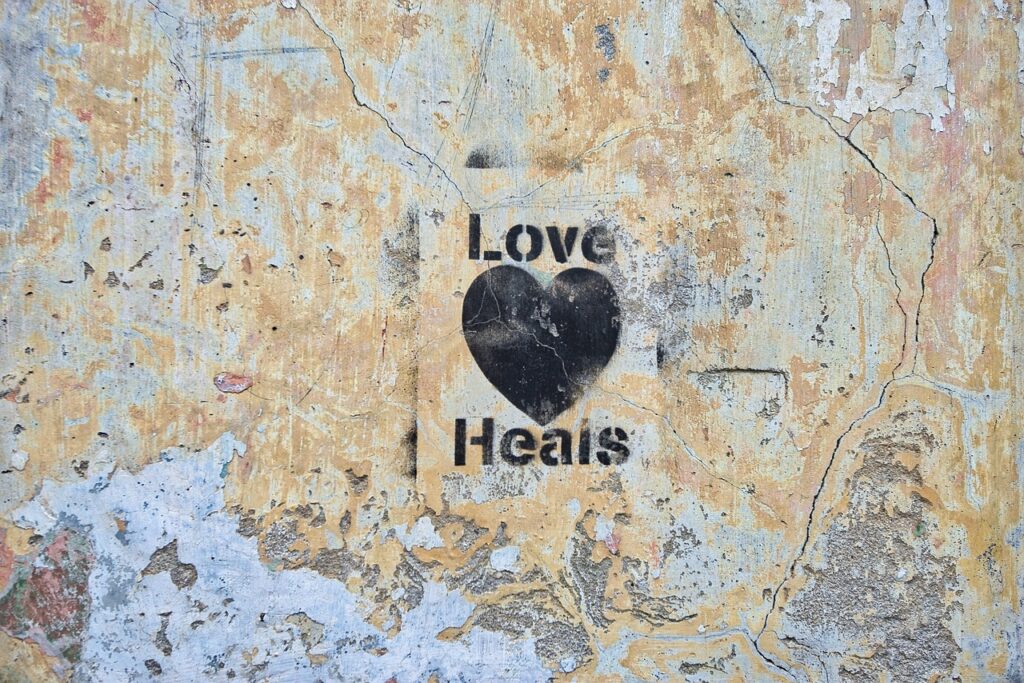
As soon as our personality, our creativity, our thought processes, our integrity or our adaptive, bodily resources are compromised, the stage is set for the sudden or gradual onset of trauma. Once again, all kinds of internal and external factors will determine whether we do or do not, in fact, experience the events as traumatic. Nevertheless, we are able to identify a wide range of causative events that can produce a traumatic state if allowed to proceed unchecked.
Unravelling Trauma with Shiatsu
Using all of this as our context, we turn to the undoing, the loosening, the unravelling of trauma. Let us remind ourselves that prevention is obviously far better than cure and that there are a thousand ways in which trauma can be obviated through greater or lesser acts of mindful conduct and kindful communication. This barely needs to be said and yet we find ourselves in a world where trauma is, if not common, then certainly not uncommon.
Concerning the subjects of repair, rehabilitation and regeneration, suffice it to say that it is never too late and there is no such thing as a hopeless case. No one need ever abandon hope – neither client not therapist, neither friend nor acquaintance. There is always something that can be done and once the first step is taken, another may follow and from there others become increasingly possible.
The methods available are now numerous and increase daily. Some may find that a verbal exchange helps to initiate the process. Others react more favourably to hands-on interventions at the outset. Shiatsu is a wonderful example of a holistic therapy that has at its disposal myriad fruitful avenues of intervention. One very important component of the therapeutic process is empowerment. From the therapist’s perspective, this may be the single most important part of the help we offer – that every single word said, deed enacted and thought envisaged may be in the service of empowering our clients’ liberation from the paralyzing strait jacket of trauma.

Endurance, Courage and Commitment
From the client’s perspective, the most important tools will most likely be endurance, courage and commitment.
Endurance is important because the way will almost certainly not be straight and neither smooth, almost certainly not downhill. There will be curves and bends and the uphill stretches may at times seem impossible to endure. An image to keep with you might be the spiral – you will probably have to pass through the same territory several times. Many, perhaps. Each time you do so, you will feel slightly stronger; have a tad more perspective, a little more knowledge of yourself. You are spiralling past the same point, but you are not the same person.
Commitment is just as important because one of life’s little truths is that until we commit with our whole being, no substantial results will ever be achieved. When you find yourself ready to commit – from inside the marrow of your bones out to the ends of your eyelashes and the tips of your toes – then you are truly ready to travel the path of rebuilding your original self.
You will need every ounce of your courage to initiate the process and to keep it going through the many challenges which you will certainly face. You will need to be brave in facing things that are as repellent as anything on earth, things that you once feared would destroy you. This courage will be repaid ten-fold, a hundred-fold and you will be able to find support to maintain this bravery with the person or people you decide to trust as you unravel the pain of the past and move towards your birth right.
There is no limit to what you can achieve and even if the pot was initially as black as sin, know that you can not only reclaim, recycle and regain your original energy but discover gifts and abilities you never even suspected you had.

A Cloud with a Silver Lining
Shifting metaphors at the very end, the Japanese remind us that trauma can be a cloud with a silver lining. They hold that a broken ceramic vase, when repaired with golden coloured glue, becomes an even more precious ornament than a run of the mill object that survives unscathed. How can this be? The reason resides precisely in the paradox of suffering: when we are forced to go through difficult processes to gain wisdom we grow in immeasurable ways. We become more flexible, we dig deeper into our resources, we broaden our perspective and finally, we develop compassion.
Suffering in itself can be said to have no intrinsic merit. This presumption notwithstanding, it is held in many spiritual circles that knowledge gained without arduous effort has little value. Effort in itself may equally be viewed as fruitless and barren. It is exactly in the combination of effort and effortlessness, suffering and liberation, panorama and painstaking process that development is to be, if not expected, then at least predictable.
The recipient of trauma can, in this light, be seen as rich pasture indeed.
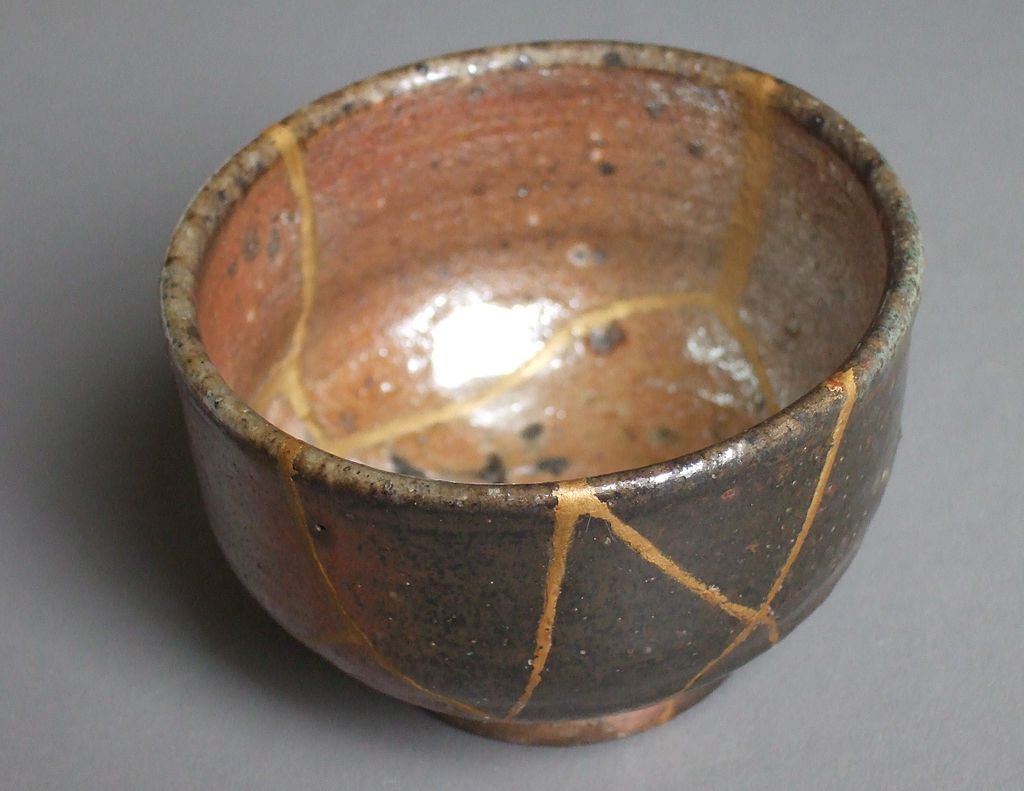
Autor
- Shizuto Masunaga: his way of diagnosing – part.3 - 31 May 2023
- Shizuto Masunaga (part 2): His Creation - 9 January 2023
- Shizuto Masunaga (part.1): a genius on shoulders of giants - 6 October 2022
- The Blackened Pot - 15 June 2022
